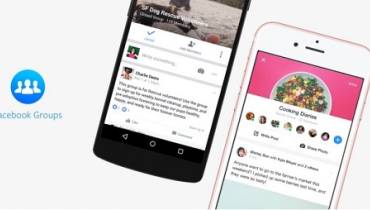How Often Should You Be Sending Out Email Newsletters?

Email newsletters communicate product-focused and informational content to your business leads or customers, depending on the goal. Despite flooded inboxes, email newsletters are considered the most effective marketing tool for online businesses.
In the world of ecommerce, a newsletter is utilized to increase brand reach. It can serve multiple purposes depending on your email marketing goals. Some of the popular ones are:
- Informing readers of feature updates
- Announcing flash sales and other promotions
- Sharing the latest industry trends and news
Moreover, newsletters aren’t only promotional. They tend more to educate and provide insights with the purpose of building brand authority and brand credibility.
So, how do you know whether your email newsletter is a success? You need to track newsletter open rates and aim for 15 to 25%. This may sound ambitious but employing the right strategies will help you get there.
Newsletter cadence is an important factor that influences newsletter open rates. Send too many and people will grow sick of your brand, deleting your email or worse, marking you as span. Send too few and you’ll be forgotten by your prospects and lose potential customers!
The question then, is: How often should you send out an email newsletter to your email list?
The frequency of sending newsletters depends on the type of information you have for your subscribers or customers.
Here’s what the pros suggest:
Digital marketing experts recommend that the frequency be no more than twice a week or less than once in a month.
Are you wondering how they arrived at this suggestion? Fret not; we’ll break it down for you and touch upon all the factors that influence newsletter frequency for maximum conversions.
How to Choose Newsletter Frequency
One study tried to compare the frequency with results and created a chart that showed the businesses sending newsletters on a daily and weekly basis. It turns out large companies generally send newsletters more frequently than small companies.
Another perspective to consider is the customers. Do they want to receive the newsletters from you or not? If yes, then how often do they want these in a given period? It depends upon the type of information and products that you are dealing with.
Therefore, business size and industry are vital to consider while selecting the frequency of your business newsletters.
1. Ask Your Subscribers
Sometimes subscribers can get irritated if you frequently bombard them with emails, but they forget you if you sparsely send out emails. Therefore, you need to find the sweet spot!
The best way is to involve the subscribers in deciding the number of newsletters in a month. You can do it by using an email preference survey like; this email is to allow subscribers to choose the frequency and the content type they want to receive through newsletters.
Furthermore, you can even categorize the subscribers with low, medium, and high frequency and send the newsletters separately for every category. But this might require all hands on deck!
2. Consider Industry Statistics
As we discussed earlier, the industry and business size are among the main determinants of an ideal newsletter frequency.
Continuously developing and evolving industries have a lot of news coming in. There are new strategies always pouring in and it’s important for people to stay up to speed with them. This makes such industries ideal for frequent news updates with email newsletters.
The business size is also important to consider. For example, if you’re running an enterprise with a large collection of products, your newsletters would have to be more frequent.
Smaller businesses and stagnant niches require less frequent updates.
3. Take note of brand relevance
Some businesses deal with products that are seasonal or belong to a particular event or situation. Therefore, it is useless to send newsletters frequently throughout the year, which can irritate your subscribers, forcing them to unsubscribe.
Customers like to receive newsletters that are:
- Timely
- Specific to the situation
- Attractive
- Purposeful
To cater to this, you must be aware of your brand’s relevance to these. Further, you must be continuously scanning the external environment, i.e., market and target customers, and look at various newsletter ideas to draw inspiration.
What is the current trend in the market and what are the preferences of your target customers? These are then compared with the product line that afterward proves very helpful in deciding the newsletter frequency.
For example, some cultural and religious events induce people to shop extensively, and your products can match these events, like popular gift items around Christmas. Information like this is needed a few weeks before Christmas and subscribers are looking forward to it.
4. Consider Your Content Producing Ability
If you send newsletters very often, the biggest problem faced is the unavailability of quality content. A survey has reported that 32% of unsubscribes are because of poor content.
Try sending newsletters when you have new and quality content for your customers. The content must create interest for readers.
If you can produce new content regularly, you can set a higher newsletter frequency, like twice every month. Otherwise, do not ruin brand image and stick to monthly newsletters!
5. Test and Retest
A reliable way to know what the right newsletter frequency should be for your business is to test, test, test!
Run a few experiments and track your data. It is simple when you break down the collection process into individual tasks. A simplified testing process includes:
- Testing Goal: Establish the metric you wish to improve. Is it the open rate, conversion rate, response rate, or number of unsubscribes? This is the starting point of any test. For instance, if you are facing an increased number of unsubscribes, your prospects are probably annoyed so you have to reduce your newsletter cadence. You can also start testing from weekly newsletters. Then try biweekly, and move on to monthly. Measure your choice of metric for these to find the sweet spot and then stick to it!
- Choose Your Sample: You’ll also need a sample list for your testing. Test your newsletters on a small sample size. You can also run A/B tests to fasten the process.
- Monitor and Measure: Now, monitor the results of your newsletter frequency by using the metrics you’ve chosen earlier. Keep measuring your results over time to compare your frequency with results. Do not forget that customers and their needs change over time. Therefore, you need to make frequent testing a part of your marketing strategy.
Conclusion
So, now you know how often you should send email campaigns. In a digital marketing strategy, you cannot ignore the importance of newsletter frequency.
However, you must consider all the internal and external elements that are linked to your marketing campaign. Therefore, customer input and data-oriented calculations are essential while choosing newsletter frequency.





















